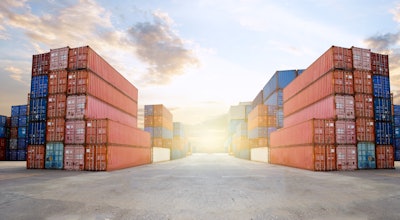
Let’s begin with a basic definition: When an organization moves freight using two or more modes of transportation, such as rail and truck, that’s a multimodal logistics approach.
It’s nothing new — when companies moved goods by steamship and stagecoach in the mid-1800s, that was also multimodal logistics. Over time, the evolution of freight transportation modes has accelerated to accommodate shippers’ ever-growing demand for abundant and flexible capacity to help them cut costs and optimize efficiency in their supply chains. Today, multimodal logistics is playing a critical role in helping them do just that.
For modern logistics operations, multimodal options typically include less-than-truckload (LTL), drayage, expedited shipping, and partial or shared truckload services. Logistics brokers may also offer options like air freight, white glove (extra care) shipping and final mile transportation. In a competitive economy, and especially when supply chains are stressed like they have been for the past few years, capacity is king. A multimodal logistics approach expands capacity, which is why the strategy becomes more important as those demands increase.
How multimodal logistics saves time, money and the planet
If capacity is king, then flexibility is the king’s hand. It is one of the primary advantages of a multimodal strategy because it empowers logistics professionals to choose the most effective and efficient modes of transportation for moving freight through the supply chain. Depending on market conditions and seasonal factors, multimodal transportation can offer shippers better rates and improved service. For example, a shipper benefits from a cost perspective by using LTL services instead of paying for unneeded capacity.
Multimodal options can help optimize logistics operations, making transportation more cost-effective for companies of any size because no matter what volume they ship, they can aggregate volume that promotes professional service — the same service typically reserved for enterprise-level shippers. Multimodal logistics are a primary driver of ecommerce growth, with smaller companies particularly benefiting from LTL services. Multimodal logistics also allows shippers to receive inventory and restock quickly, meeting the velocity demanded by the big ‘e-tail’ players.
Another benefit of this approach is that, if time isn’t an issue, multimodal flexibility can enable shippers to save a significant amount on shipping costs by using more economical transportation methods. Again, flexibility is the key — working with a logistics brokerage that offers an array of multimodal services gives shippers the power to choose rapid modes when time is of the essence, and save money when it’s not.
Lastly, multimodal logistics can help reduce carbon emissions, which is a massive focus across multiple industries, including retail. A multimodal logistics approach can help companies fulfill environmental impact goals by using partial/shared truckload options when available, reducing the total number of trucks on the road and decreasing the number of trucks carrying less than their full capacity. In this way, multimodal logistics is not only saving shippers time and money — it’s also helping to reduce carbon emissions.
Multimodal logistics as a multipurpose supply chain improvement tool
Supply chain executives have had to be creative over the past few years to find freight capacity and solve supply chain challenges. The answer is rarely a “one-size-fits-all solution,” but rather an “all of the above” approach. Supply chain managers must look at all options in this market and find the modes that provide the flexible capacity they need at the price and service levels they require.
Multimodal logistics is a powerful tool. To use it to its full advantage, supply chain executives need to be knowledgeable about the various modes available and the marketplace so they can find the services that best fit their unique freight needs. Directly contracting services can create additional operational difficulties, which is why many supply chain executives turn to third-party logistics (3PL) providers to support their shipping operations.
The pandemic accelerated this trend, with some companies outsourcing their logistics operations to 3PLs, whether by performing operational activities or even having 3PL employees working onsite when the business is experiencing staffing shortages
Capacity today is valuable. And because the logistics landscape exists in a constant state of lightning-fast change, multimodal solutions can help keep shippers ahead of the curve and improve their bottom line. We will no doubt see continued innovation in the logistics space, such as exploring the use of drones and autonomous vehicles as ways of improving the movement of goods in the future. Indeed, for as long as capacity is king, multimodal logistics will remain an indispensable part of the supply chain, and executives who harness its flexibility will be best positioned to drive efficiency and growth for their companies.















